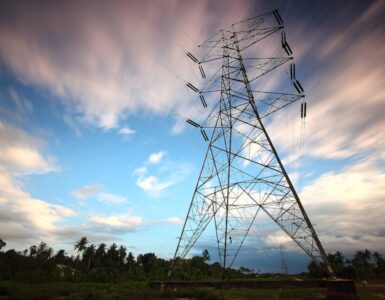Vice President Mike Pence is in Arizona today for the second time in just over a month.
When he was here in March, the vice president was a keynote speaker at the National Association of Manufacturers board meeting. During his visit, he heard about everything Arizona is doing to make its economy one of the hottest in the nation.
He also heard from Arizona job creators about two looming concerns: the need to bolster the number of individuals ready to fill thousands of available positions and how immigration reform can help meet that labor demand; and the need to adopt the USMCA, the successor agreement to NAFTA.
The vice president’s visit today is for a different reason, but he will see up close the intersection of the same two issues: immigration and trade.
A redeployment away from economic health
In response to the influx of migrants from Central America who are making asylum claims at the U.S.-Mexico border, the Trump administration is redeploying Customs and Border Protection officers away from ports of entry in order to assist Border Patrol in processing the migrants.
The shift of personnel away from the ports means longer lines for cargo waiting to enter the U.S. The shipping delays disrupt supply chains, increase costs, and could soon impact consumers as products bound for store shelves are stuck waiting to be cleared at the ports.
When the vice president visits Nogales today, he’ll be in the community that serves as one of the major entry points for fresh produce grown in Mexico, especially tomatoes. The nation depends on these imports to meet consumer demand at grocery stores and restaurants year-round, but shipments spike in cold-weather months, so states far away from the border could soon be feeling the ramifications of the border slowdown. Arizona is feeling the effects of the staffing reductions in real time, as CBP has been forced to stop processing cargo on Sundays.
In a letter to Arizona Rep. Ann Kirkpatrick and Rep. Raul Grijalva, Douglas, Ariz. Mayor Robert Uribe wrote, “Longer crossing times for trucks will have a severe impact on just-in-time manufacturing structures in the manufacturing sector and the crossing of perishable commodities. In short, the impacts of additional wait times resulting from reduced staffing are many.”
The staffing pinch doesn’t just affect commercial cargo, either. Staff is being diverted from vehicular and pedestrian lanes, too, creating more delays and lots of heartburn for Arizona border communities that count on cross-border shoppers for up to 70 percent of their sales tax revenues. With Easter Week typically one of the busiest crossing times of the year for shoppers and tourists, a major bottleneck could dissuade travelers from making the trip and could mean that the border retail and tourism sectors are poised to get walloped.
The diversions exacerbate ongoing CBP staffing challenges, which sometimes result in unopened entry lanes even in high-volume periods. As San Luis, Ariz. Mayor Gerardo Sanchez wrote in a letter to the state’s congressional delegation, “Our officers at the ports of entry are already overworked in a highly stressful and sensitive job. Reducing staffing at the ports of entry will only aggravate the situation for CBP personnel.”
A national response
The business community and border stakeholders recognize that the challenge of how to address the rise in asylum seekers from Central America is not an easy one, but we should exhaust all possible options to avoid hurting the economy. This issue affects the entire nation, so a national response is warranted.
In the short term, Congress should be doing all it can to ensure the Department of Homeland Security and affected border states have the resources—including financial—to humanely respond to the influx of migrants. Capitol Hill should also examine whether U.S. asylum laws need reform, how to increase temporary detention space, how CBP’s hiring process can be streamlined, and should ensure we have a sufficient number of judges to adjudicate asylum cases.
We know what the long-term solution is, and yet it has remained elusive for decades: Comprehensive immigration reform that enhances border security, boosts staffing at the ports to process trade and travel while also interdicting contraband, overhauls our outdated visa laws, and once and for all addresses those undocumented individuals already here, including the estimated 800,000 individuals in an undocumented status who were brought to the U.S. as children.
Tariff-free trade and a well-managed, secure border
The White House should also stop its threats to close the border completely. Not only would a closure be an economic catastrophe, but it is doubtful that it would have any effect on the migration patterns from Central America.
Instead, the administration should redouble its efforts to work with congressional leaders to ratify the USMCA, which is essential to maintaining robust trade throughout North America, remove existing tariffs on Mexican and Canadian aluminum and steel, and ensure our trade partners that no new ones are coming.
For trade to flow, a tariff-free agreement like USMCA is vital, but so is a well-managed, secure border.
So welcome back to Arizona, Mr. Vice President, home of one of the nation’s fastest-growing economies. We want to keep it that way, which makes solving this latest immigration puzzle with solutions that won’t hurt trade imperative.
Glenn Hamer is president and CEO of the Arizona Chamber of Commerce and Industry. For more on the border trade disruptions, listen to this conversation with Glenn, the San Diego Regional Chamber of Commerce’s Paola Avila, and Laredo, Texas Mayor Pete Saenz. The dialogue was hosted by Chris Wilson and former ambassador Tony Wayne of the Woodrow Wilson Center’s Mexico Institute.
















Add comment